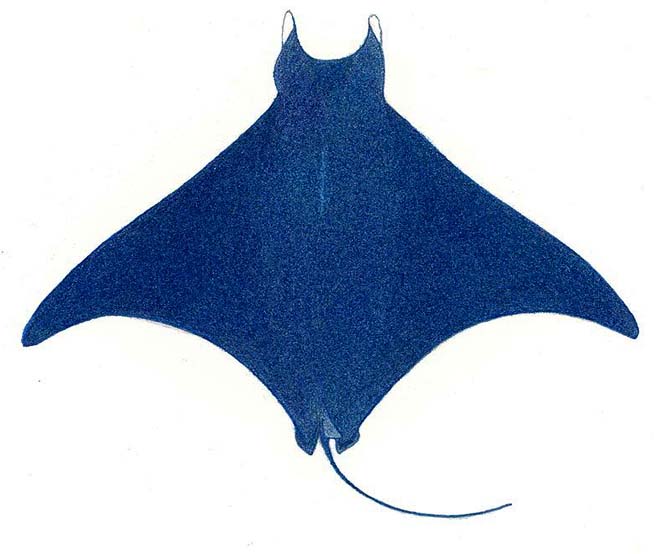|
Mobula taracapana (Sicklefin devilray)
(Philippi, 1892)
Life
> Eukaryotes >
Opisthokonta
> Metazoa (animals) >
Bilateria >
Deuterostomia > Chordata >
Craniata > Vertebrata (vertebrates) > Gnathostomata (jawed
vertebrates) > Chondrichthyes > Elasmobranchii > Batoidei >
Myliobatoidei >
Mobulidae
 |
|
Mobula taracapana (Sicklefin devilray) [Illustration
by Ann Hecht ©] |
Identification
A large, long-headed devilray with short head
fins, subterminal mouth, a plain dorsal fin, pectoral disk with
strongly curved, swept-back tips, on the pectoral fins, and upper
disk densely covered with small, pointed denticles. Tail shorter
than disk and without a sting. Colour dark blue above, white below
except for broad blue-grey areas along front and rear margins of
disk; blue fades to grey after death.
Size
To at least 3.0 m DW.
Range
East coast, Jeffrey's Bay, probably elsewhere in the area; circumtropical.
Habitat
Pelagic and coastal, comes close inshore.
Biology
Almost totally unknown. Eats small fishes and crustaceans.
Known in the area from a single specimen washed up alive on a beach.
Human Impact
None.
Text by Leonard J.V. Compagno, David A. Ebert
and Malcolm J. Smale
|
